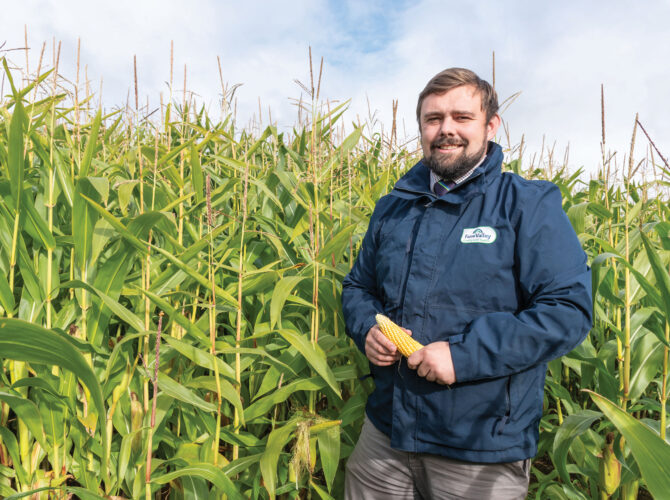Get The Most From Maize Silage
9th October 2023

With challenging weather across the country during the summer it has resulted in some grass silage being poorer than expected or planned for. This puts an increased emphasis on getting the most out of any maize silage that is still to be harvested to boost the feed quality of your animal’s diet.
Despite the wet weather maize crops are looking good, this is due to summer temperatures being up 1-2C on the long-term average. It was highlighted at a recent Fane Valley Maize open day the importance of temperature for maize development. Selecting the correct varieties for the climate was also a key message with Northern Ireland most suited to early and ultra-early varieties.
Harvesting the crop at the correct time is key to ensuring maximum starch levels and digestibility in the crop. The crop should be cut when it reaches 30% dry matter, and the milk line is 1/3 down the kernel. This can be checked by splitting a cob and the kernel should resemble your thumb nail with a pale white colour showing across the bottom of the grain. For livestock feeding the chop length should be at least 25mm in length and the kernel should be broken into at least four pieces.
Achieving a fast, efficient fermentation and a silage which is stable are key to maximise the production and quality of your maize silage. Maize silage can be prone to losses from an inefficient fermentation and dry matter losses.
Using Magniva Platinum Elite Maize additive has shown a 6.5% reduction in dry matter losses over other maize silage inoculants. The patented combination of L. hilgardii and L. buchneri in the Magniva Maize range not only improve the stability of the clamp but prevent secondary fermentation which has the added benefit of reducing moulds and yeasts which can cause health problems in the animal. In a trial maize treated with Magniva Platinum had twelve times less yeast at early opening than untreated maize.
Ensure the clamp is filled in thin even layers, with plenty of weight and time given to consolidation of the clamp as the first step for effective fermentation is to remove as much air as possible. If the clamp is left poorly compacted and spongy, the beneficial microbes cannot start to work as quickly and there is an increased risk of spoilage microbes interfering with fermentation. Good compaction increases the likelihood of a more stable silage during feed out.
Find out more about making the most of your maize silage by speaking to your local Fane Valley Agronomy & Forage specialist or call 02892610485.

